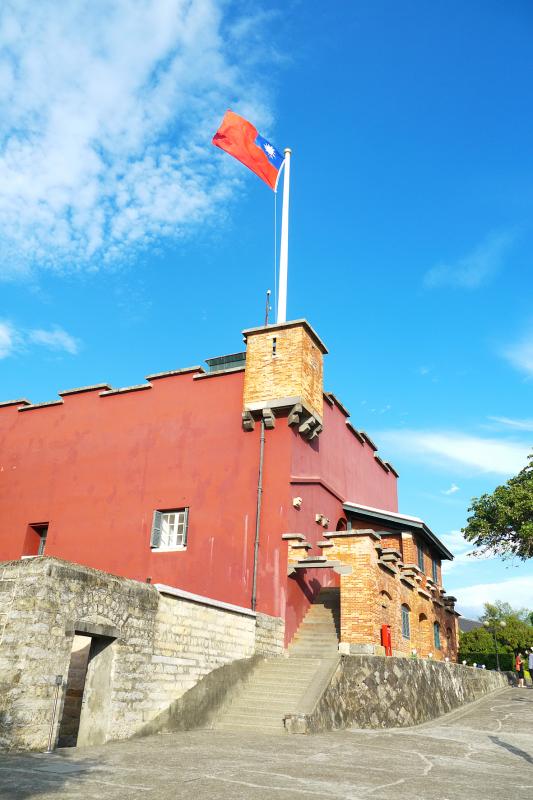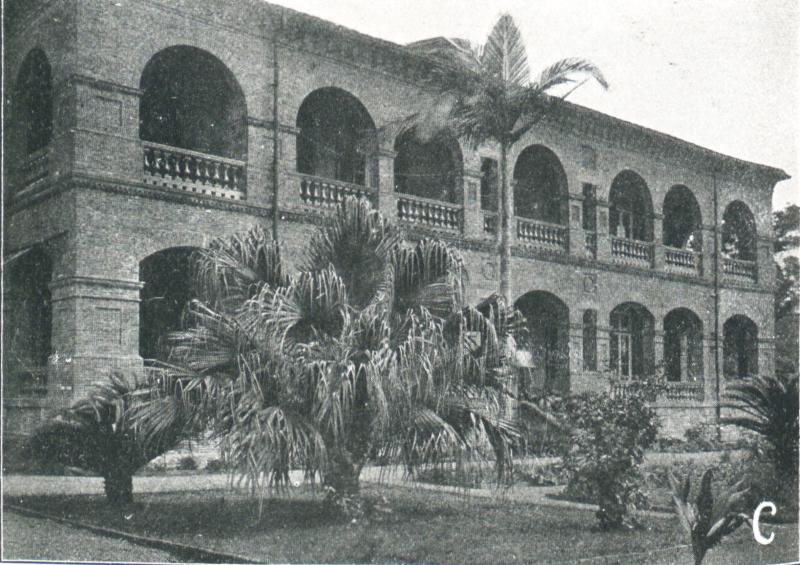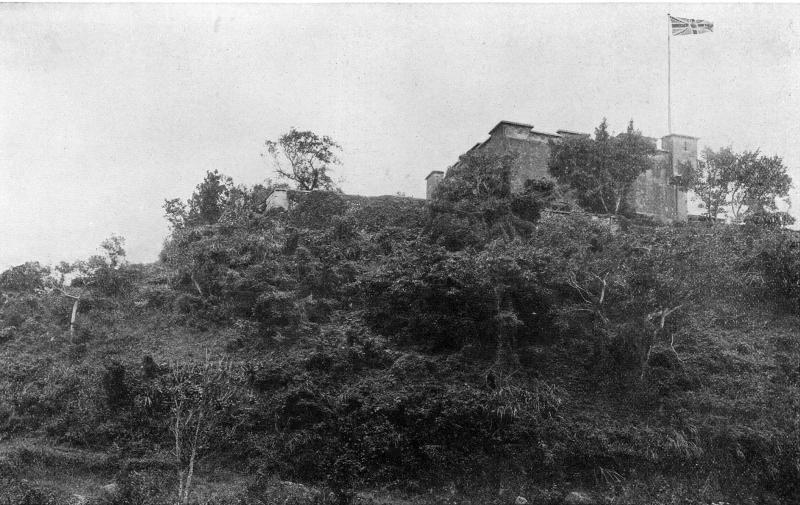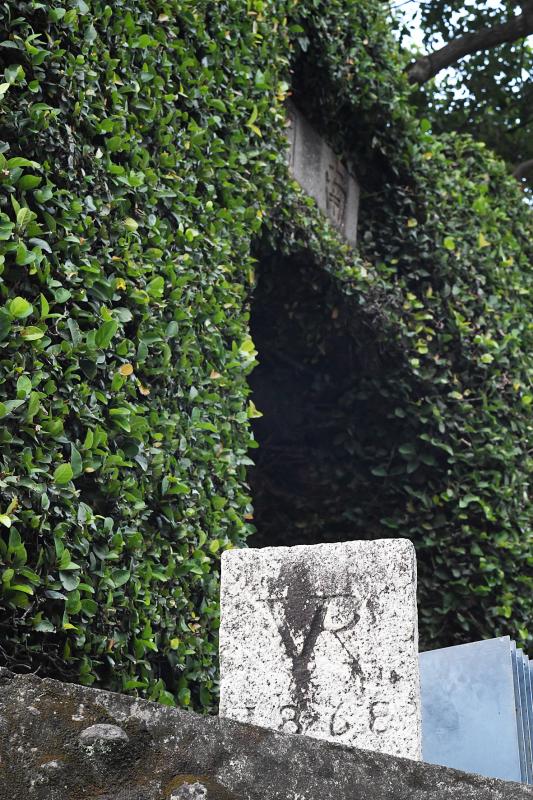June 28 to July 4
During the late 1970s, hot-blooded young protesters were known to break into the guarded Fort San Domingo in Tamsui to protest what many considered the “shame of the nation.”
What is now one of northern Taiwan’s top tourist attractions was strictly off limits to the public then, walled off and shrouded in mystery. In fact, the government didn’t even own the more than three-century-old complex, as the British had permanently leased it as their consulate until Chinese pressure forced them to remove all official representation in Taiwan in 1972. The fort then briefly served as the Austrian embassy, but that country broke ties with Taiwan for China within a few months.

Photo courtesy of Wikimedia Commons
The events caused an uproar among Taiwanese, and calls for the government to reclaim the fort began around then. But instead the British transferred it to the Americans, who continued to administer the structure after they, too, severed relations with Taiwan in 1979.
Writer and academic Lee Li-kuo (李利國) published several articles in 1977 about the fort’s ownership in Cactus Magazine (仙人掌雜誌). Author and popular hiking blogger Tony Huang (黃育智) writes that he learned about the fort for the first time through Lee’s work: “Few of us had any idea that there was still a foreign concession in Taiwan, and that our own citizens were not allowed to set foot in it. I was young, passionate and full of patriotism back then, and the truth made my blood boil.”
On June 30, 1980, the government finally took possession of the fort. The handover ceremony can be seen on a Chinese TV System (華視) clip on YouTube, which concludes with the Republic of China (ROC) flag being raised on the top of the fort. It was opened to the public four years later.

Photo courtesy of Academia Sinica
PERMANENT LEASE
The Spanish, who colonized parts of northern Taiwan during the 1620s, built the original wooden Fort San Domingo in 1629. They razed the fort in 1642 before they were expelled by the Dutch, who built a new structure in 1644. It was named Fort San Antonio.
For many years, people believed that the current structure was the original Fort San Domingo, and even today it still retains the name. Historian Tsao Yung-ho (曹永和) is often credited for confirming in 2005 that the structure is in fact Fort San Antonio.

Photo courtesy of National Central Library
The Qing Dynasty took possession of the fort when it control of Taiwan in 1683, and renovated it in 1724. They were forced to open Tamsui to foreign traders per the 1858 Treaty of Tianjin, leading to the need for a British consulate. This consulate initially operated out of a rented private residence, but in 1867 the British signed an agreement to permanently lease what was then-called the Helanlou (荷蘭樓), or “Dutch Fort.”
“It is agreed that so long as Her Majesty’s government continues to pay the above stipulated lease for the said land they shall be allowed to rent the same and the Chinese government shall not be empowered to refuse to continue the lease,” the agreement read.
The British made many repairs and additions to the structure, painting it red and adding a two-story brick building in 1891 to serve as the consulate.

Photo courtesy of Wikimedia Commons
After Qing ceded Taiwan to Japan in 1895, the British offered to sell the fort to the new colonizers and move their consulate to Dadaocheng (大稻埕). But the deal fell through as the Japanese were not willing to pay the asking price. In 1909, the British signed a new perpetual lease for the property with the Japanese.
The consulate closed in 1941 as the two sides fought during World War II, and the British returned to the fort under the Chinese Nationalist Party (KMT) in December 1946.
BROKEN TIES
At this point, the permanent lease appeared to still be in effect as the ROC had decided to honor the agreements that the Qing had signed with foreigners before its establishment in 1912.
To the dismay of the new government, the UK in January 1950 decided to recognize the People’s Republic of China and break ties with Taiwan. Yet it maintained the consulate in Tamsui, creating a curious situation where it had official representation in a country it didn’t recognize. The government didn’t seem to mind; it was beneficial to them to keep relations with the British.
This lasted until March 1972, shortly after China replaced Taiwan in the UN. In adherence to the “one-China” policy, the UK announced that it would remove its consulate from Taiwan. It wanted to completely cut official relations with Taiwan, with visas being handled through designated airlines and commerce conducted through businesses in Taipei.
Despite public furor, the government was reluctant to ask for the fort back. While they owned the land the fort stood on, the consulate building was built by the British, who wanted compensation for it. Also, they were wary of antagonizing the British since they had many interests in Hong Kong.
Nearby Aletheia University, which is affiliated with the Taiwan Presbytarian Church, was one of several parties hoping to use the building. They negotiated with the British from 1972 to 1978, and although nothing came from it, they’re credited for tackling the issue long before the government took action.
Negotiations dragged on until February 1980, when the government terminated the lease and gave a deadline of June 30 to the British to work out a deal. By then, relations between the two sides had stabilized with the establishment of the Anglo-Taiwan Trade Committee in 1976.
Working with National Taiwan University’s civil engineering and urban planning experts, they renovated the property and designated it a first-grade historic site. On Christmas Day, 1984, tens of thousands of people made their way to Tamsui to finally get a look at the enigmatic fort they had been hearing so much about.
Taiwan in Time, a column about Taiwan’s history that is published every Sunday, spotlights important or interesting events around the nation that either have anniversaries this week or are tied to current events.

This month the government ordered a one-year block of Xiaohongshu (小紅書) or Rednote, a Chinese social media platform with more than 3 million users in Taiwan. The government pointed to widespread fraud activity on the platform, along with cybersecurity failures. Officials said that they had reached out to the company and asked it to change. However, they received no response. The pro-China parties, the Chinese Nationalist Party (KMT) and Taiwan People’s Party (TPP), immediately swung into action, denouncing the ban as an attack on free speech. This “free speech” claim was then echoed by the People’s Republic of China (PRC),

Exceptions to the rule are sometimes revealing. For a brief few years, there was an emerging ideological split between the Democratic Progressive Party (DPP) and Chinese Nationalist Party (KMT) that appeared to be pushing the DPP in a direction that would be considered more liberal, and the KMT more conservative. In the previous column, “The KMT-DPP’s bureaucrat-led developmental state” (Dec. 11, page 12), we examined how Taiwan’s democratic system developed, and how both the two main parties largely accepted a similar consensus on how Taiwan should be run domestically and did not split along the left-right lines more familiar in

As I finally slid into the warm embrace of the hot, clifftop pool, it was a serene moment of reflection. The sound of the river reflected off the cave walls, the white of our camping lights reflected off the dark, shimmering surface of the water, and I reflected on how fortunate I was to be here. After all, the beautiful walk through narrow canyons that had brought us here had been inaccessible for five years — and will be again soon. The day had started at the Huisun Forest Area (惠蓀林場), at the end of Nantou County Route 80, north and east

Specialty sandwiches loaded with the contents of an entire charcuterie board, overflowing with sauces, creams and all manner of creative add-ons, is perhaps one of the biggest global food trends of this year. From London to New York, lines form down the block for mortadella, burrata, pistachio and more stuffed between slices of fresh sourdough, rye or focaccia. To try the trend in Taipei, Munchies Mafia is for sure the spot — could this be the best sandwich in town? Carlos from Spain and Sergio from Mexico opened this spot just seven months ago. The two met working in the